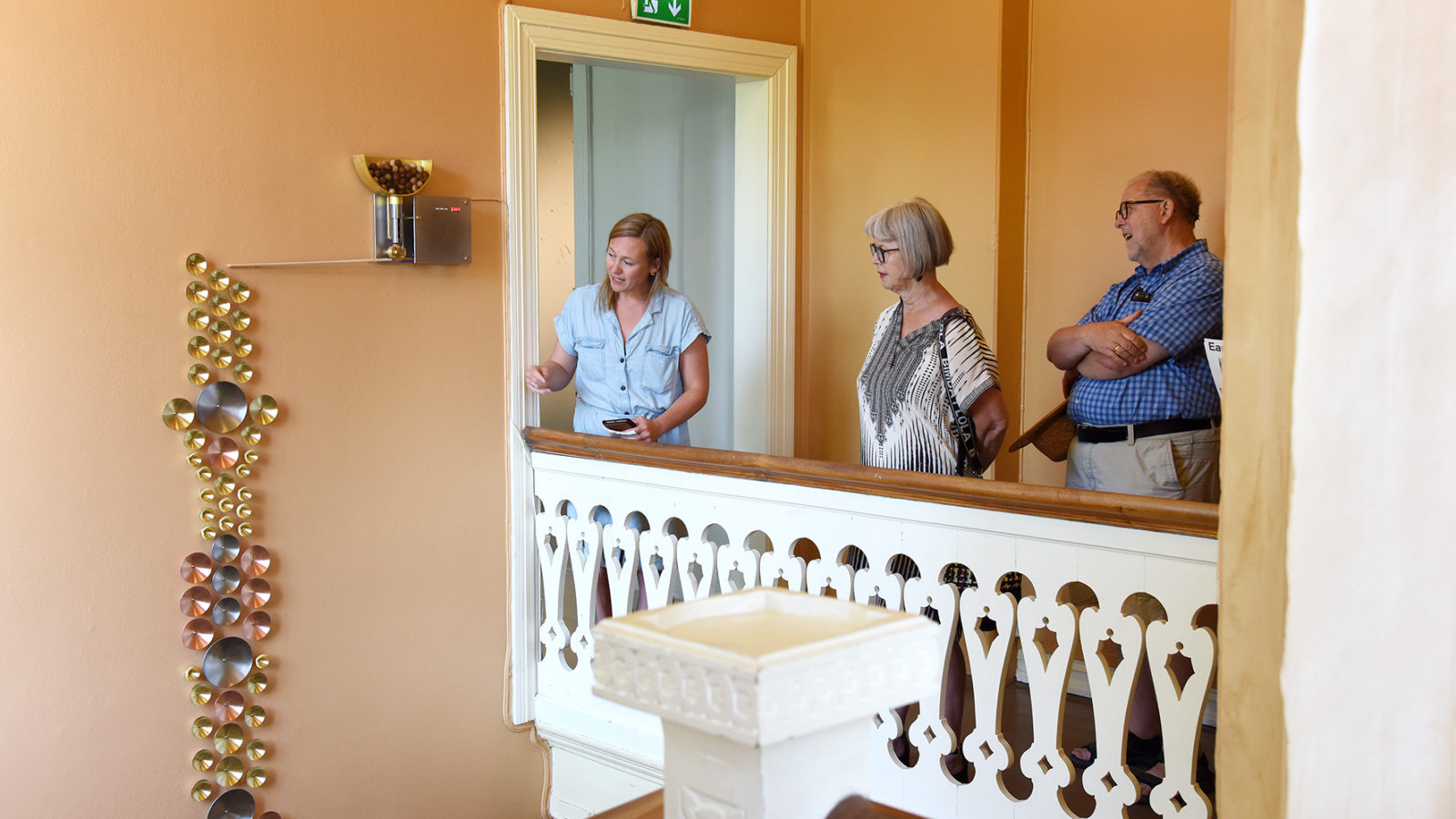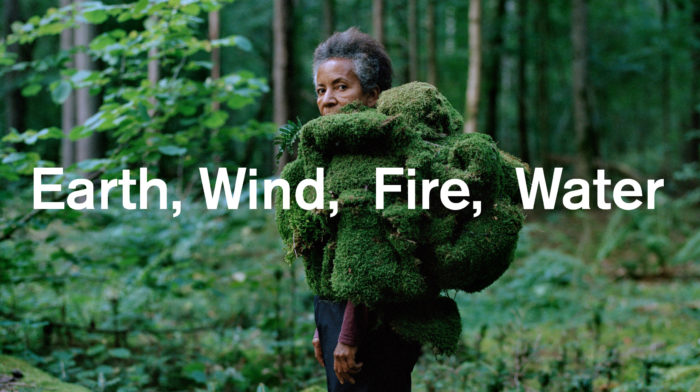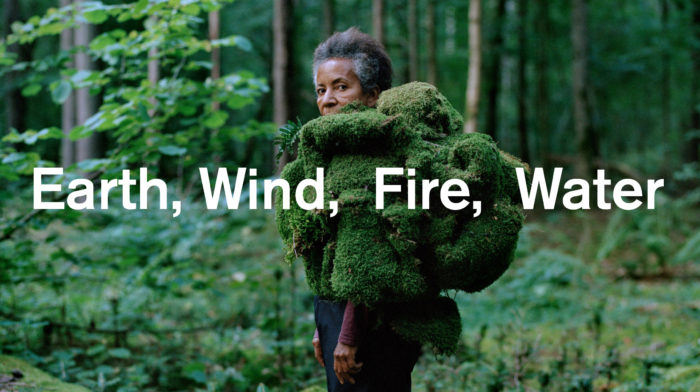Earth, Wind, Fire, Water
Nordic Contemporary Crafts
44th edition of Tendenser
16 June— 4 October, 2020
Galleri F 15
Artists
Hildur Bjarnadóttir (IS), Ebba Bohlin (SE), Fellesskapsprosjektet å Fortette Byen (Sápmi/NO), Alma Heikkilä (FI), Karoline Hjorth & Riitta Ikonen (NO/FI), Guðjón Ketilsson (IS), Kasper Kjeldgaard (DK), Stian Korntved Ruud (NO), Ivana Králíková (CZ/SE), Valentin Manz (DE/NO), Britta Marakatt-Labba (Sápmi/SE), Pekka Paikkari (FI), Louise Sidelmann (DK), Brynjar Sigurðarson & Veronika Sedlmair (IS/DE), Ida Wieth (DK), Hedvig Winge (NO) og Charlotta Östlund (SE/FI).
Curated by Randi Grov Berger (NO).
Earth, Wind, Fire, Water – Nordic Contemporary Crafts is the 44th edition of the exhibition series Tendenser (Tendencies) at Galleri F 15 in Moss, Norway. For nearly fifty years, Tendenser has been one of the leading platforms for contemporary craft in the Nordic region. First presented in 1971 as an annual exhibition highlighting Norwegian practitioners, Tendenser has since expanded to a biennial format, incorporating trends from across the Nordic countries.
This year’s exhibition brings together seventeen artists and artist groups from the Nordic countries who uses their craft, their tools, and their deep material knowledge to address pending environmental issues. Acknowledging the powerful interdependence between humankind and often overlooked materials and organisms, many of the presented artworks evoke the fragility and transiency of our earthly existence by way of components that alter, dry up, or decay throughout the exhibition period. Others reflect holistic ecological practices, implementing material collaborations to connect with the surrounding environment, with a piece of land, or with the material itself. The artists featured in Earth, Wind, Fire, Water each explore the potential of materials and the elements to co-author artistic works; to participate in and at times control the process and outcome. Encompassing biology, geology, and cosmology, their practices confront a longing for a deeper connection to the earth.
We live in a time marked by enormous changes in technology and science, while the environmental crisis has precipitated urgent discussions concerning our relationship to our immediate material world. Nordic contemporary crafts are taking an active part in this philosophical discourse, with a wide range of practices and a diversity of approaches and expressions. The exhibition offers different ways to think about, with, and through craft. Many of the craftspeople featured in the 44th edition of Tendenser identify with additional designations; designer, visual artist, art psychotherapist, photographer, storyteller, architect, gardener. They express their ideas through a multiplicity of forms; from embroidery to photography, from ceramics to video, from paintings to text, from sculptures in wood, stone, glass, and metal to installations created with a wide range of organic and synthetic materials.
The exhibition fills both floors and reception area, takes use of the F 15 Verksted with workshops you can participate in, and continues with outdoor pieces in Reierstranda, and on the building’s façade.
The exhibition is in collaboration with the Nordic Network of Crafts Associations, and has received support from the Nordic Cultural Fund and Nordic Culture Contact.
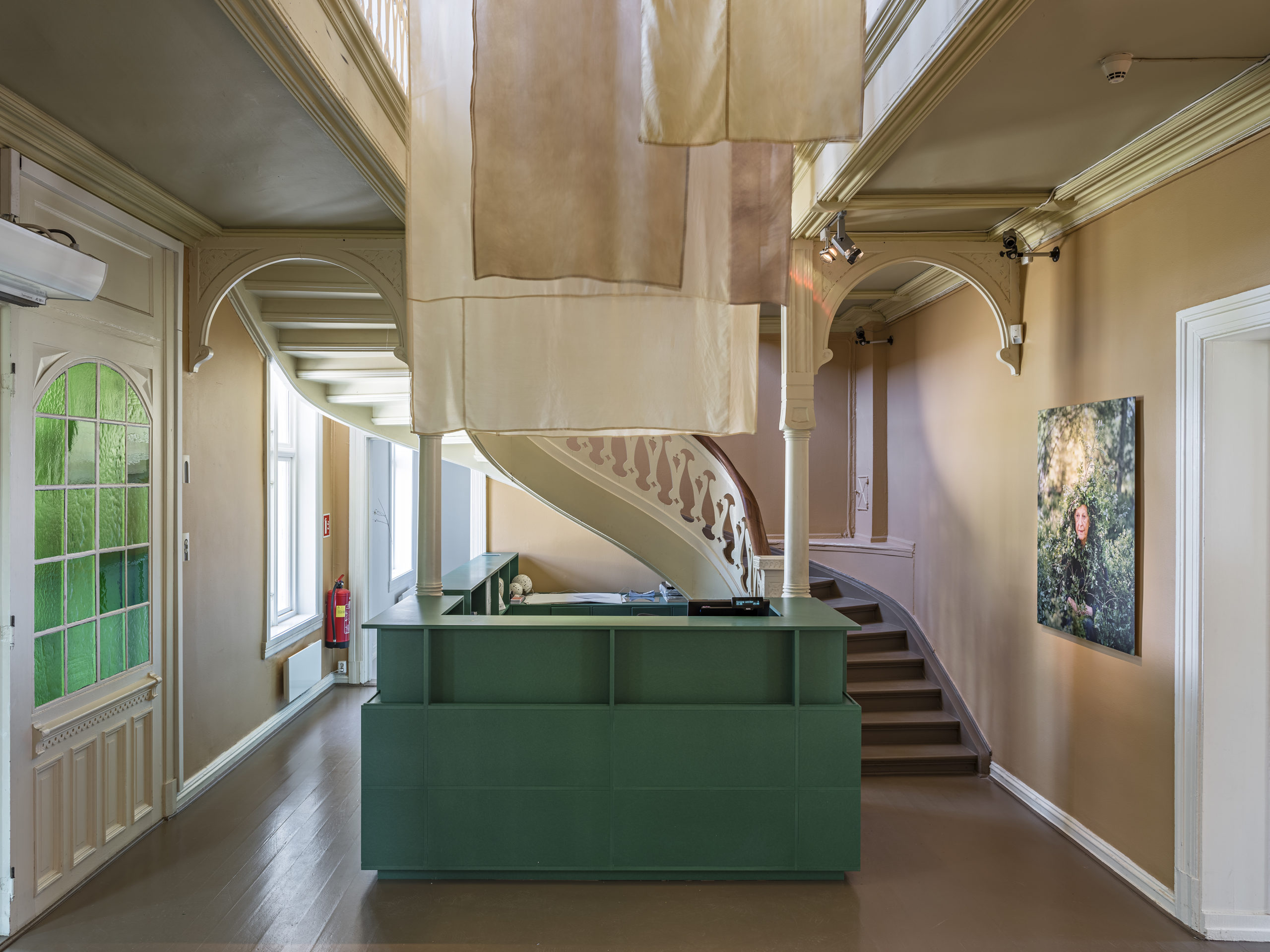
Hildur Bjarnadottir - Colors of Adaption (2020). Photo: Vegard Kleven © Galleri F 15
Hildur Bjarnadóttir
colors of adaption
2020
Plant dyed silk
For the plant-dyed silk tapestries of Hildur Bjarnadóttir, plants from the artist’s own land in Iceland function as recording devices, absorbing information from their ecological and social environment through soil and air, as well as through their roots, petals, flowers, and leaves. Exploring issues of belonging and
ecological disruption, Bjarnadóttir’s work combines both flora and fauna. Changing weather, seasonal shifts and industrial impact are all apparent in her extracted colours. In this installation pigments are
used from yellow bedstraw, northern bedstraw, common silverweed, meadow buttercup, common cottongrass, bog sedge, yellow rattle, winter cress, sweet grass and common sorrel.
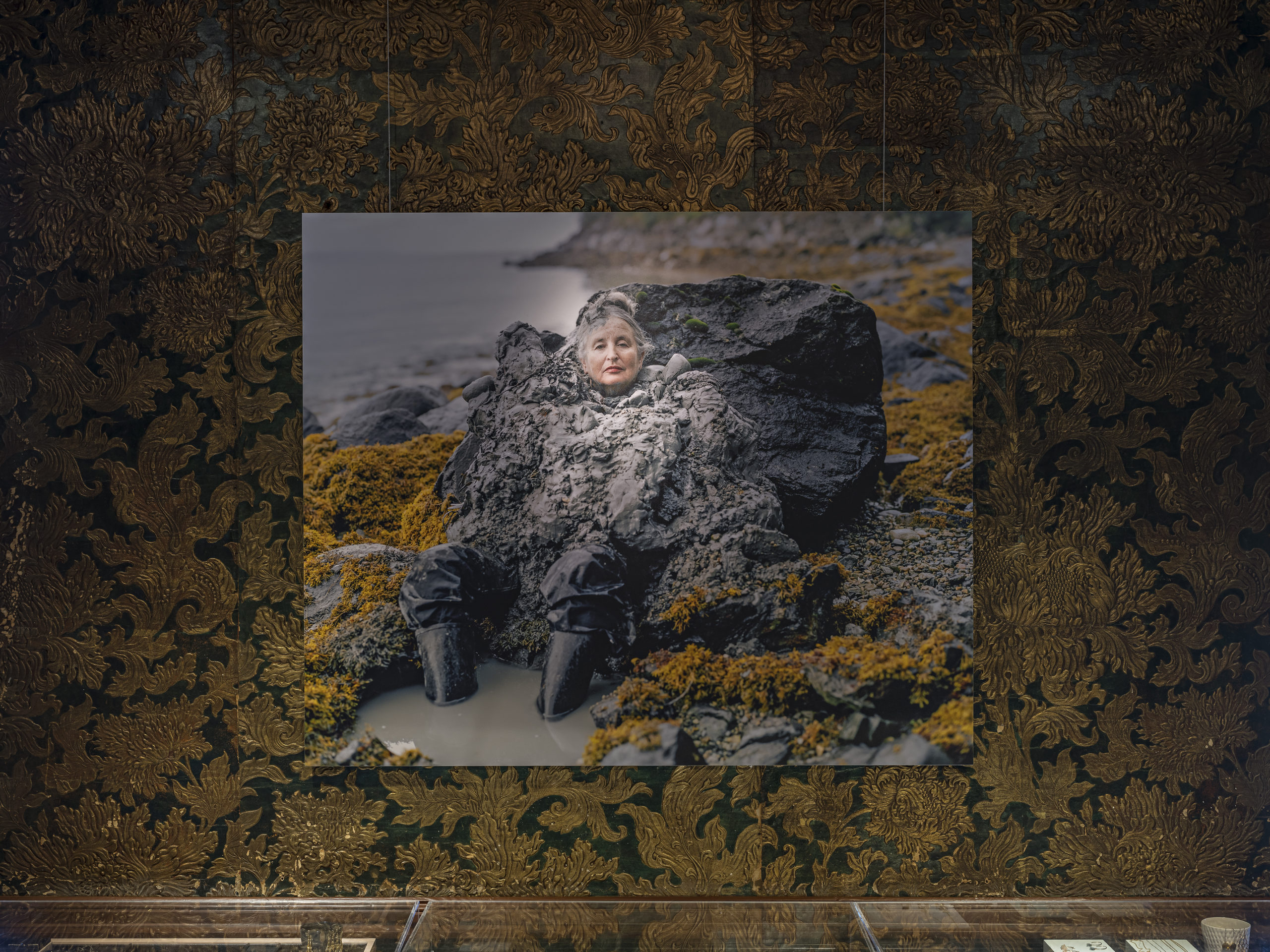
Karoline Hjorth & Riitta Ikonen Eyes as Big as Plates # Brit (2018). Photo: Vegard Kleven © Galleri F 15
Karoline Hjorth & Riitta Ikonen
Eyes as Big as Plates # Brit
Eyes as Big as Plates # Inger
Eyes as Big as Plates # Karin
Eyes as Big as Plates # Liv
Eyes as Big as Plates # Mrs Sim
2017-2019
Digital c-type
Craft encourages sociability, connection, and dialogue in its very essence. Since 2011, Riitta Ikonen and Karoline Hjorth have worked with elderly people across many countries, portraying them dressed in elements from their surroundings. Swathed in costume-like sculptures made in collaboration with the artists, these people literally inhabit their landscape, drawing attention to the intrinsic connections between human beings and their environment. The artists have thus far photographed over one hundred seniors. They added new works to the series last fall when visiting the rural Norwegian landscape in and around Jeløy and Moss.

Hedvig Winge - Porcelain Piece (2020). Photo: Vegard Kleven © Galleri F 15
Hedvig Winge
Porcelain Piece
2020
Porcelain clay, textile, rope, nails, hoists, hooks, tread, string
Hedvig Winge employs clay within an expanded practice of sculpture and painting. Textiles are splattered with porcelain clay and arranged in a site-specific installation that unfolds and transforms during the process. Grounded in her deep knowledge of the materiality of clay, Winge’s work is expansive and unpredictable; motion and vulnerability are expressed at the intersection of the work and the exhibition space.
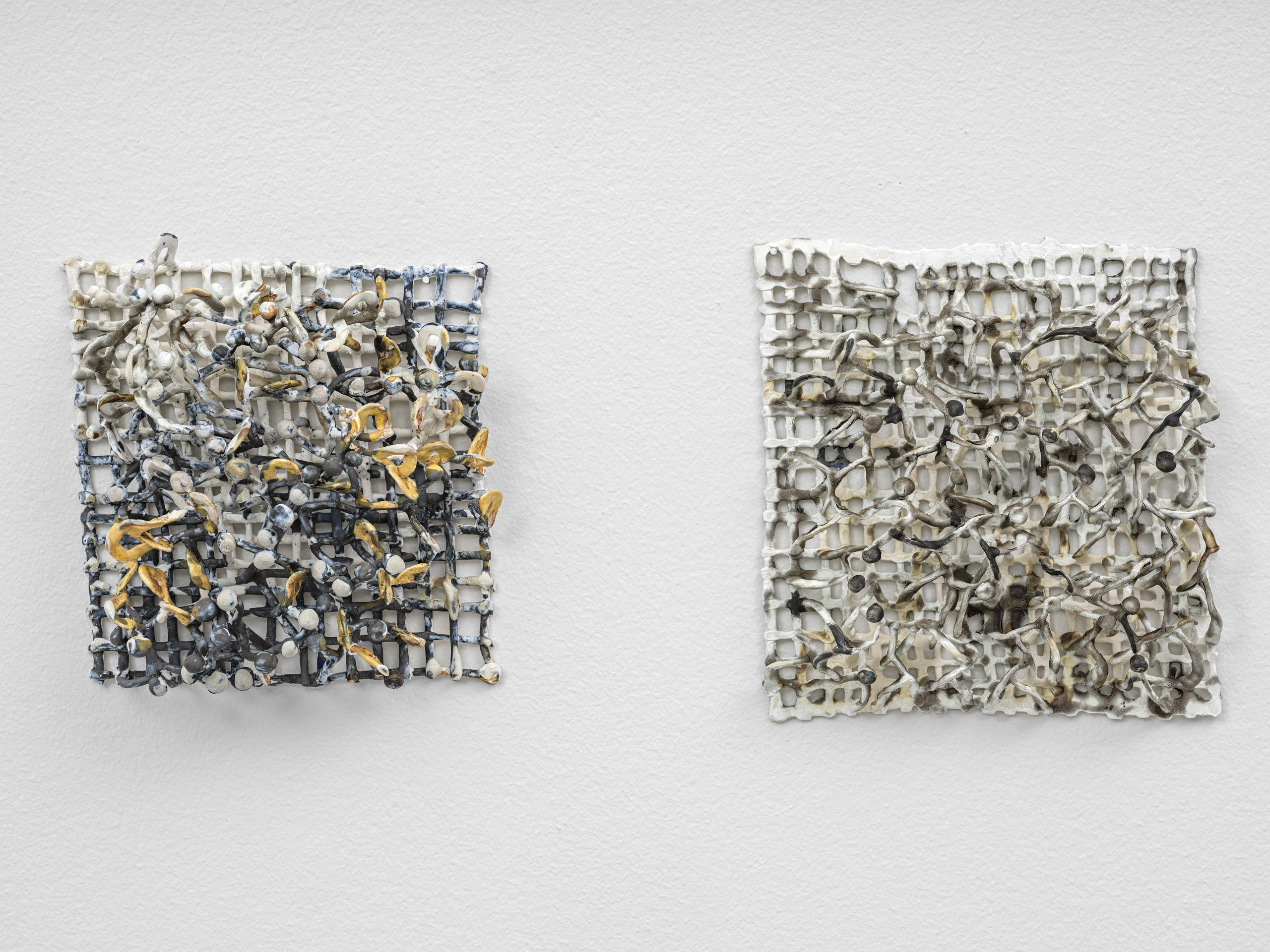
Louise Sidelmann - Hæftet streg I-II (2020). Photo: Vegard Kleven © Galleri F 15
Louise Sidelmann
Prikket streg I-II
Hæftet streg I-II
2020
Porcelain, sinter engobe
Louise Sidelmann uses clay to intuitively explore the spatial effects of lines and drawing as an artistic medium. Looking to both human infrastructure and organic systems, her delicate compositions intricately combine colour through glazing and sintering processes.
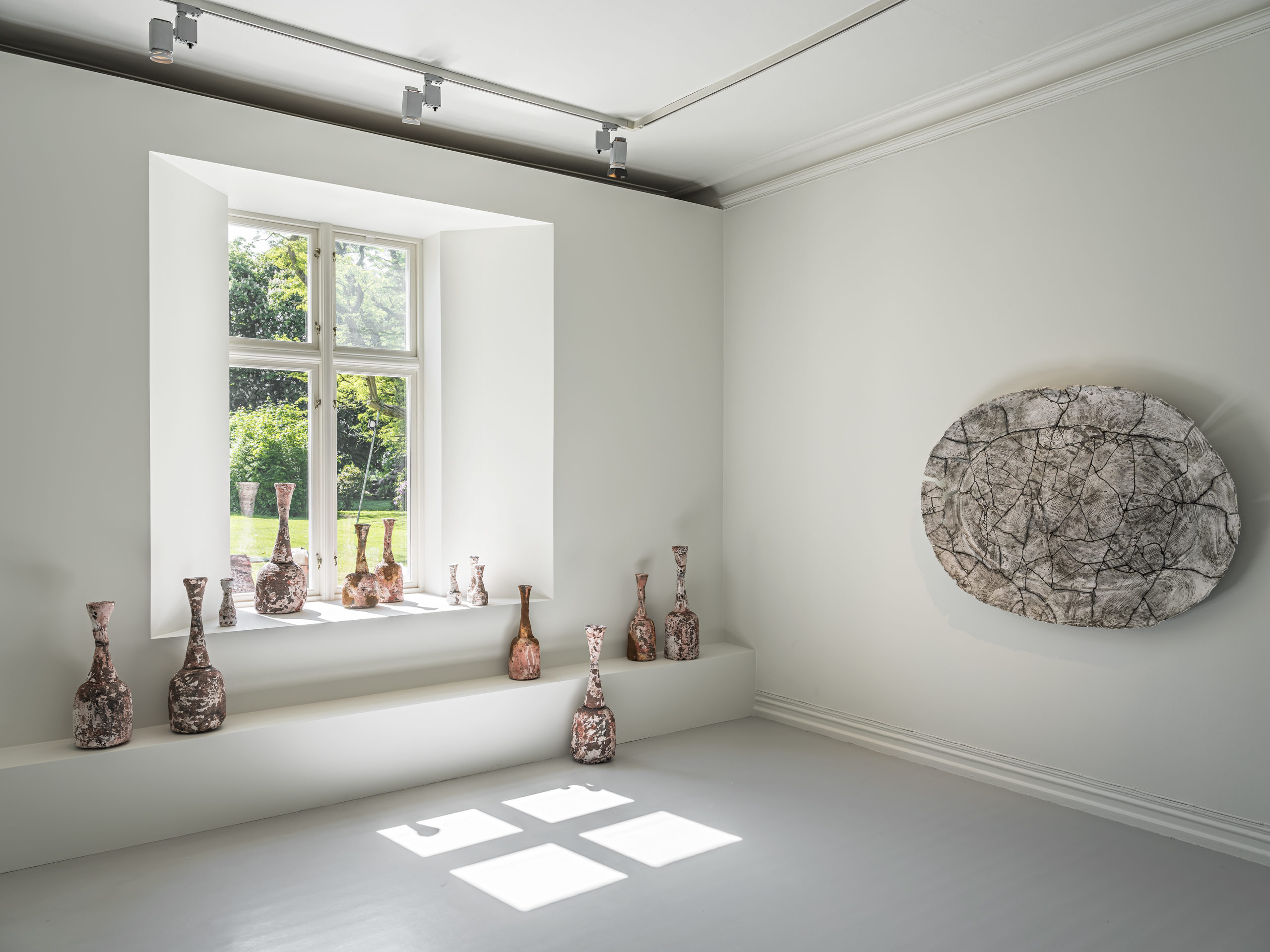
Pekka Paikkari - Paradise II (Fractured) / Curiosity Bottles (2020). Photo: Vegard Kleven © Galleri F 15
Pekka Paikkari
Paradise I
Paradise II (Fractured)
Curiosity Bottles
2020
Ceramics, Magna Crete, epoxy, rust, ash, paint, silver leaf
Pekka Paikkari embraces the accidents, material memory, and unforgiving nature of clay, working with, rather than against, the uncontrollable transformations that take place within the kiln. He looks for the soul and originality of the materials that are hidden in the cracks, through a physical process he has perfected through thirty years of practice.
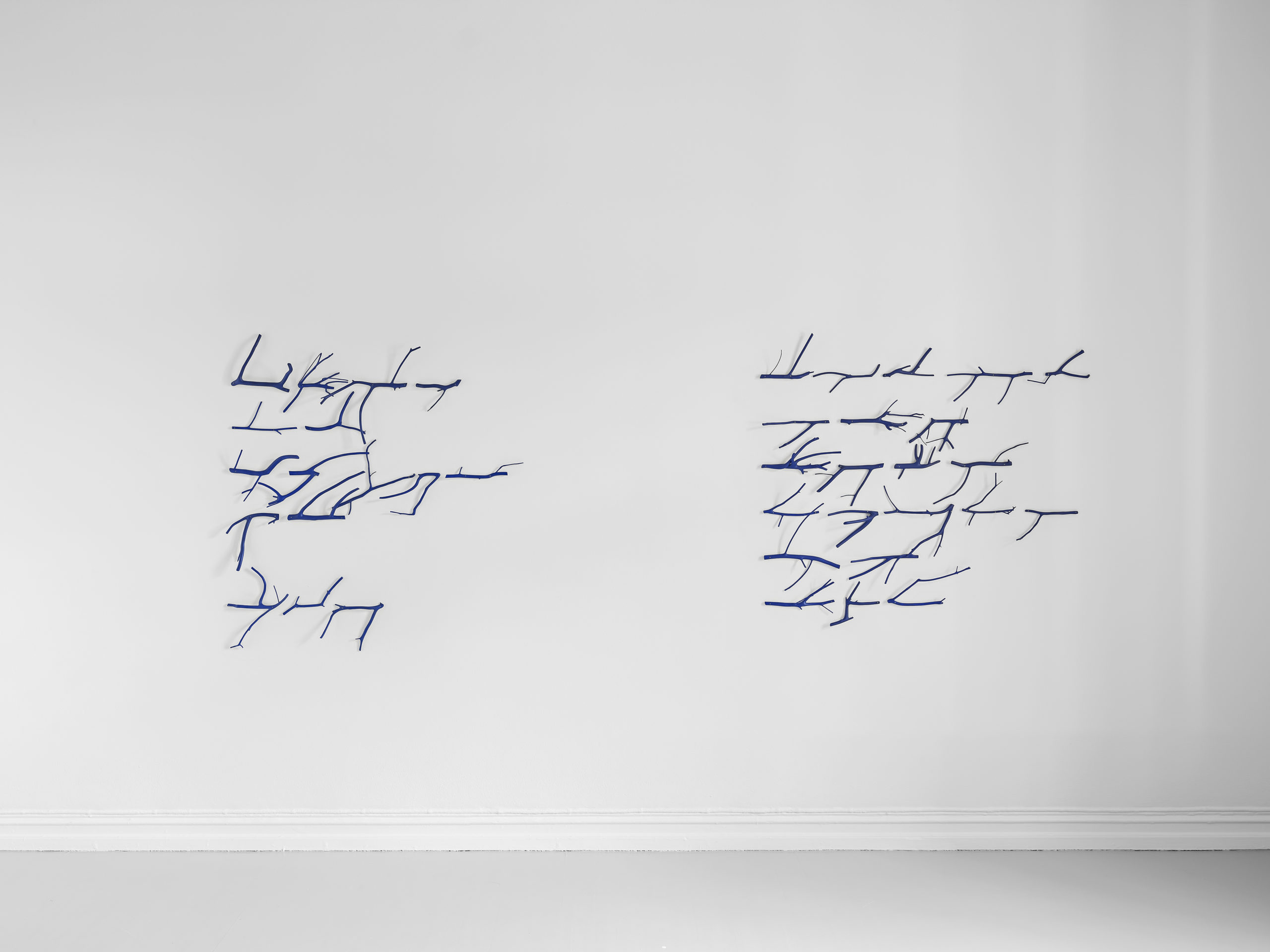
Guðjón Ketilsson - Poem I-II (2019). Photo: Vegard Kleven © Galleri F 15
Guðjón Ketilsson
Poem I-II
2019
Painted tree branches
Guðjón Ketilsson adopts philosophical perspectives drawn from new materialism and animism, namely that everything – including inanimate things – has a soul, and that all matter has value and significance. For the Poem series he assembles meticulously treated twigs to form sentence-like compositions. The fallen sticks are given new life through language; as poems, they move past their materiality.
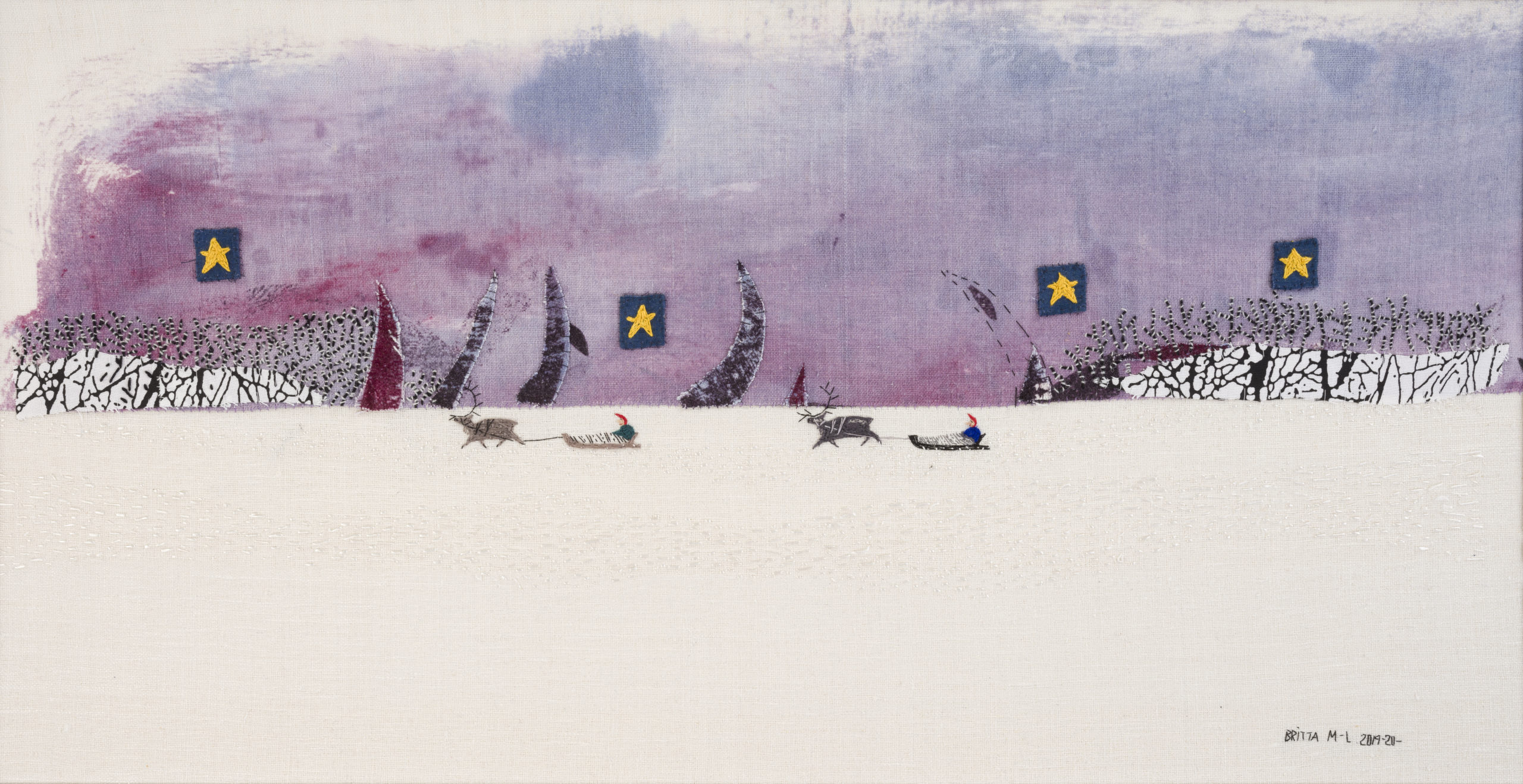
Britta Marakatt-Labba - Skuggor (2019-2020). Photo: Britta Marakatt-Labba. Courtesy of the artist.
Britta Marakatt-Labba
Skuggor
Kosmos
2019-2020
Textile, paper, embroidery, application
Britta Marakatt-Labba addresses questions of ecology, politics, and history through embroidery, combining thin wool, linen, paper, and silk yarn with screen-printing and collage. Rooted in Sámi culture, her motifs often link together everyday life and mythology. In recent years, much of her work has addressed climate change, something she herself experiences first-hand as a resident of Övre Soppero in Northern Sweden, through floods, clear-cut forestry, and increasingly warm winters.

Ebba Bohlin - Loss of Information (2020). Photo: Vegard Kleven © Galleri F 15
Ebba Bohlin
Loss of Information
2020
Recycled aluminium
Ebba Bohlin visited Jeløy in August 2019 and discovered a tree trunk in the process of decomposing. The tree trunk served as the starting point for Ebba Bohlin’s work Loss of Information. With faint traces on its surface reminiscent of human hair, the tree triggered the artist to construct a complex new ‘hybrid being’, using digital software to merge the tree with a living person. Bohlin’s practice asserts a firm belief in the transformative power of material, whether taken from nature, from language, or from the artist’s own body.
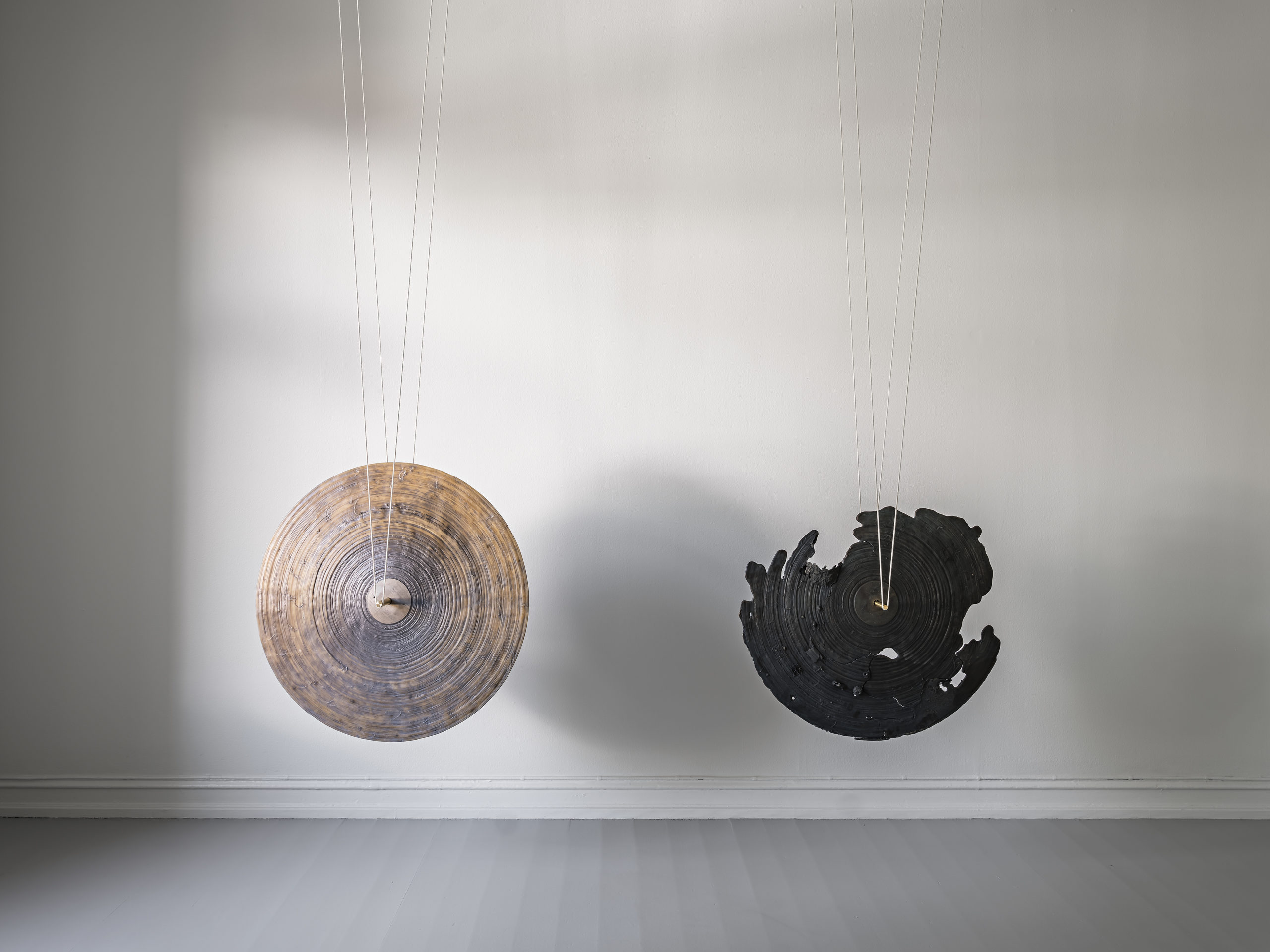
Kasper Kjeldgaard - Casts of Time - Lost in Translations (2020). Photo: Vegard Kleven © Galleri F 15
Kasper Kjeldgaard
Casts of Time – Lost in Translations
2020
Bronze, ashwood, beeswax
Kasper Kjeldgaard explores aspects of nature such as friction and gravity, using bronze, beeswax, and other materials to create a poetic universe of balance and suspense. Process, organic growth, and varying states of permanence are captured in his sculptures, articulating notions of resilience and robustness. As the elements interact with one another and the surrounding space, they affect the pace around them, prompting viewers to slow down and reflect. The sculptures have come about through a rotational process where heated beeswas forms growing circles over time.
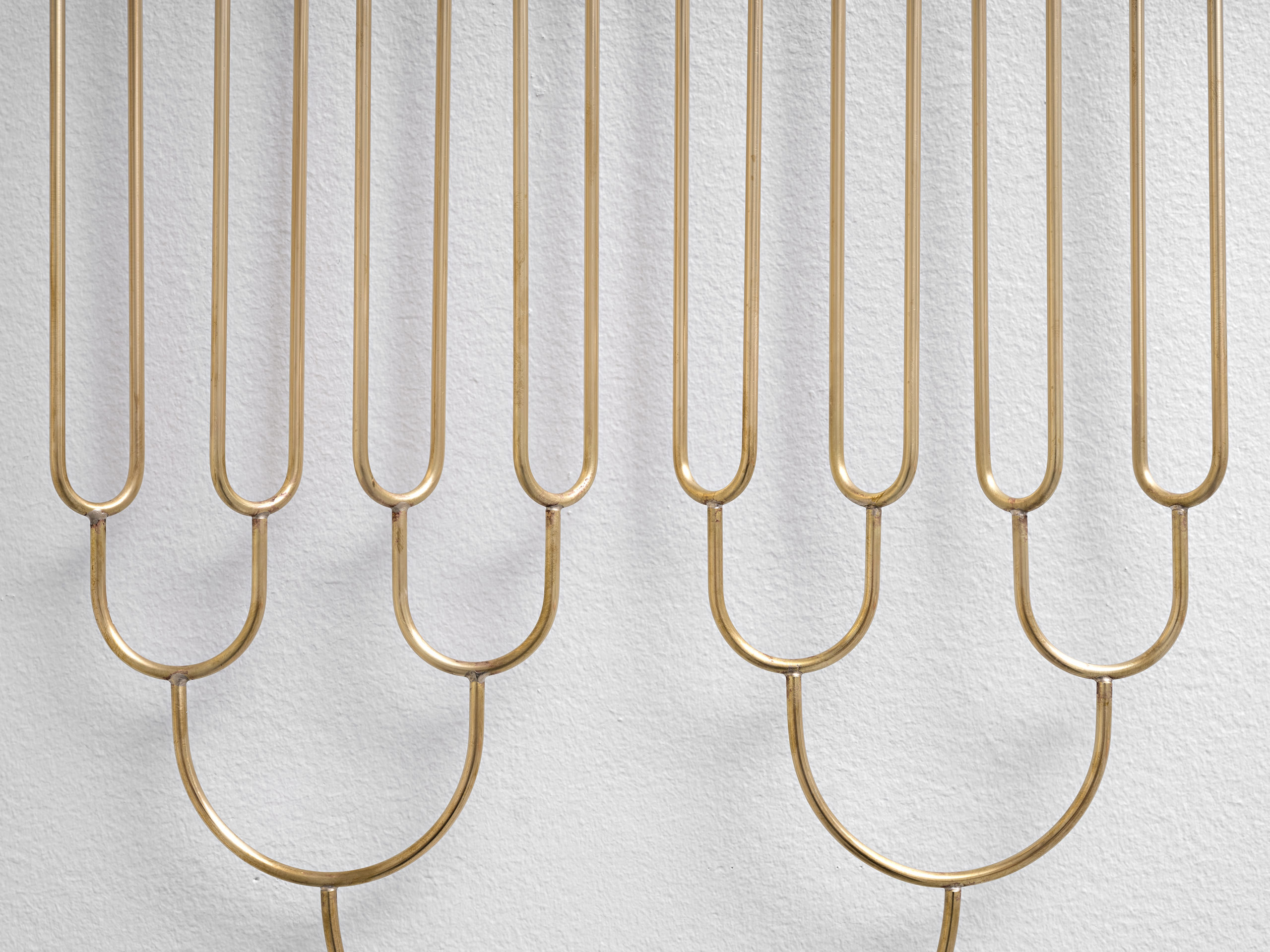
Stian Korntved Ruud - Tuning Fork III (2020). Photo: Vegard Kleven © Galleri F 15
Stian Korntved Ruud
Clock #03
Tuning Fork I – III
2020
Metal, wood, electronics
The work of Stian Korntved Ruud reflects a fascination for manufacturing techniques, inherent properties of physical materials, human-object interactions, and sound. In his new series of sculptural tuning forks, Korntved Ruud explores natural frequencies and sacred geometry. In his work Clock #03, he makes use of clock chimes and gravity to add to the soundscape of the gallery. The small wooden balls make their way down metal chimes and emit a gentle sound every hour.
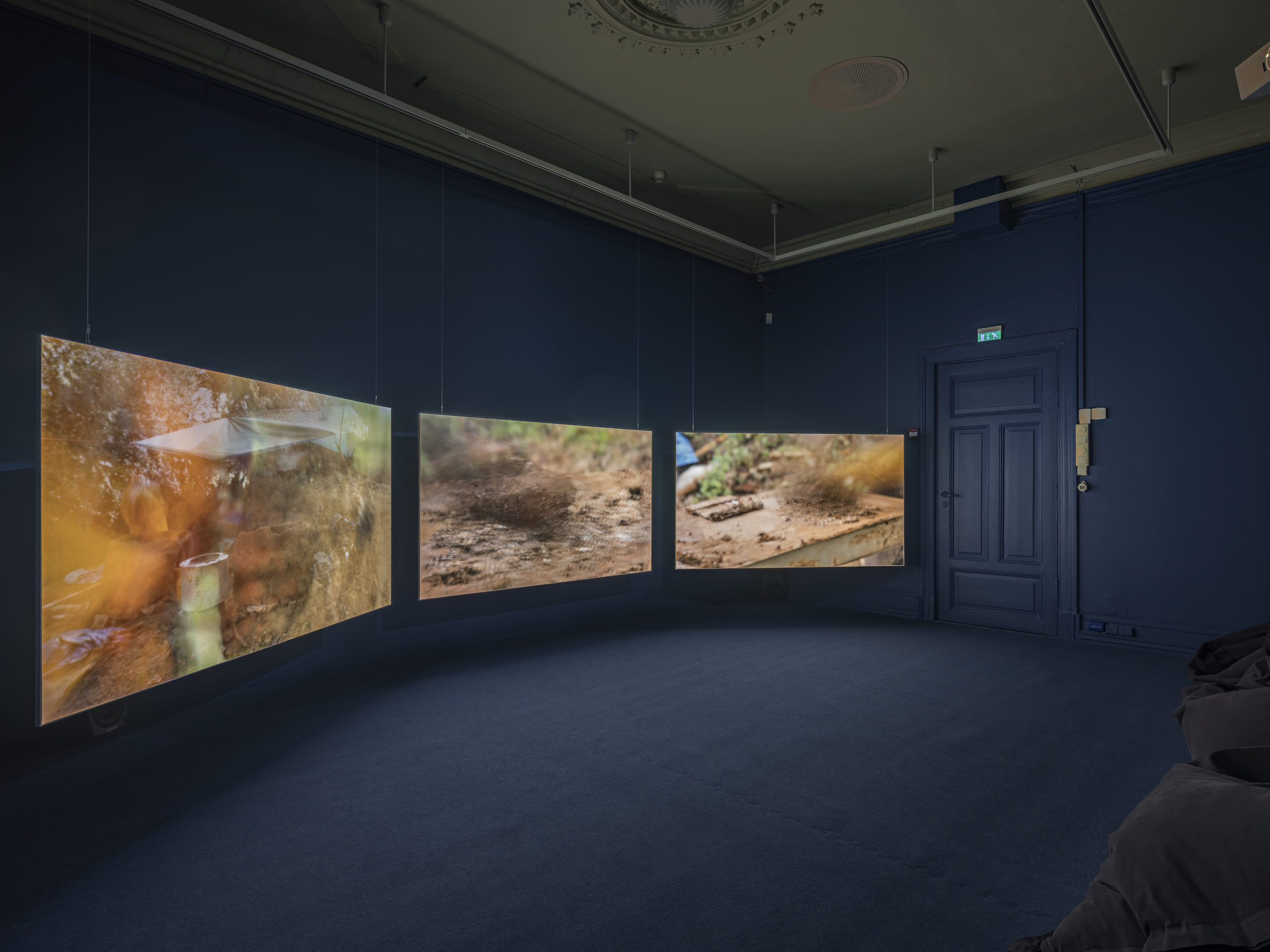
Christine Cynn - earth:NOW:being (2011). Photo: Vegard Kleven © Galleri F 15
Christine Cynn
earth:NOW:being
2011
3-screen video, 16:49 min
Music by Giles Kwakeulati King-Ashong (Kwakebass)
Valentin Manz’s participatory, long-term project In the Pits is presented within the immersive three-screen moving image installation earth:NOW:being. The film, directed by Christine Cynn, documents a site-responsive project in which Manz erects seven large-scale clay sculptures while camping in the British countryside over the course of one summer. Inviting local farmworkers and passers-by to participate, and supervising clay workshops for children, Manz created an open studio in which unpredictable forces, such as the weather, were also central to the project’s outcome. Towards the end of the summer, participants and locals were invited to witness spectacular sparkling lights fly from paper kilns as the soft clay transformed into robust ceramic sculptures.

Alma Heikkilä - these processes include plasticity, mutualistic symbiosis, and extinction (2020). Photo: Vegard Kleven © Galleri F 15
Alma Heikkilä
these processes include plasticity, mutualistic symbiosis, and extinction
2020
plaster, polyester, pigments, plant-based inks, acrylic polymer, and others
Alma Heikkilä’s work invites a heightened sensitivity to microorganisms and bacteria that exist beyond human perception. Through her large-scale on-site installation ‘these processes include plasticity, mutualistic symbiosis, and extinction’, she offers a calm and soothing environment to contemplate the importance of such minuscule species. Smaller interventions in components inhabit the exhibition space, adding a mycological twist.
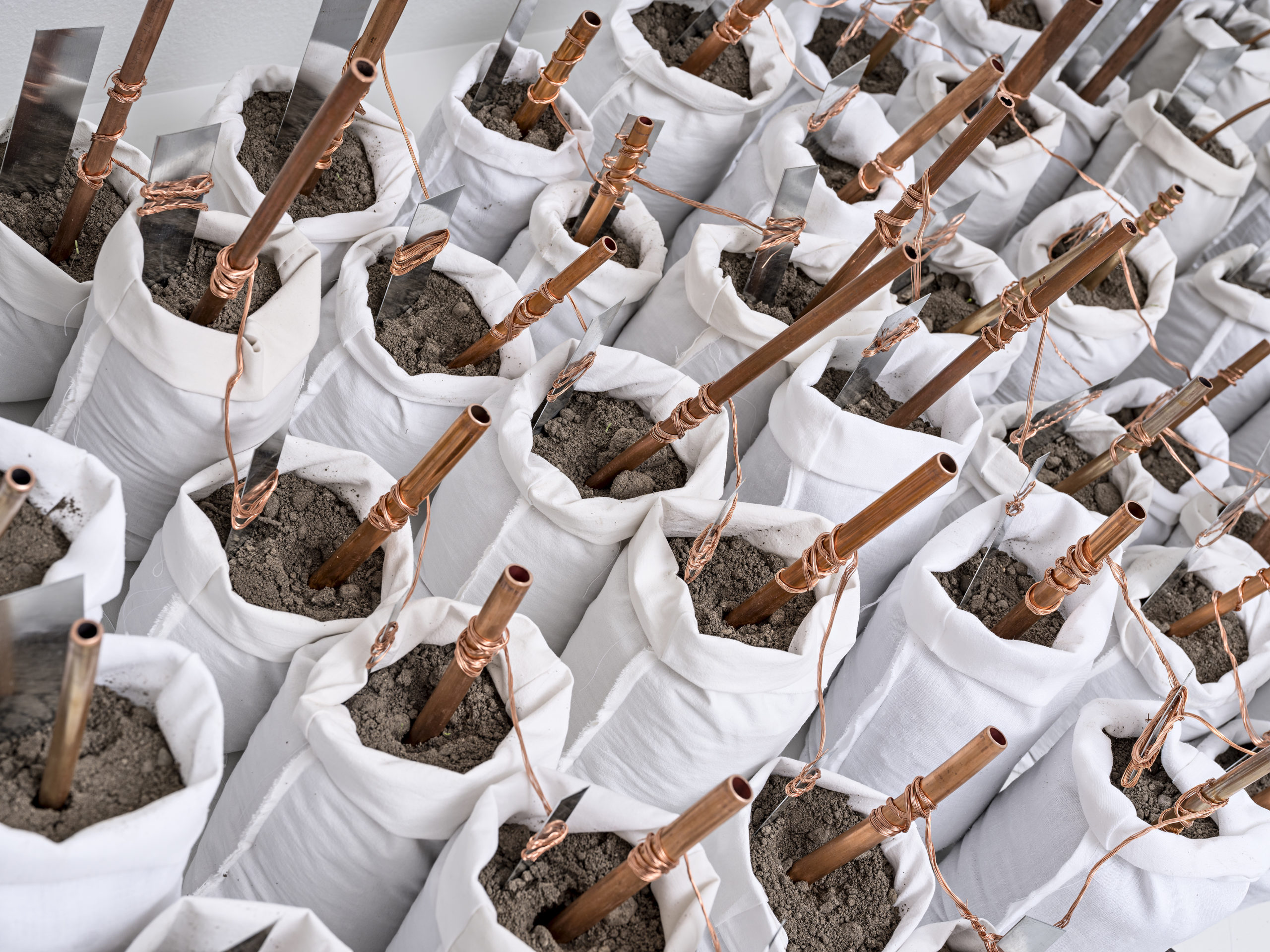
Ivana Králíková - Battery Jeløy (2020). Photo: Vegard Kleven © Galleri F 15
Ivana Králíková
Battery Jeløy
2020
Re-used cotton, re-used metal, borrowed soil, salt, water, voltmeter
Ivana Králíková uses clay as her material of choice, to engage with her local community and as an entrance point into exploring land use in cities. Her practice subscribes to the notion of neoenvironment, a broadened understanding of our total environment as a network of innumerable interrelations. For this exhibition, Králíková presents a new experiment with earth batteries, a potential new energy source. The batteries are made using excavated soil and minerals from Jeløy. 40 V & 14,5 mA represents the initial stage of her research. Her aim is to use earth materials to conduct electricity, using different metals (zinc sheets and copper wire) as electrodes.
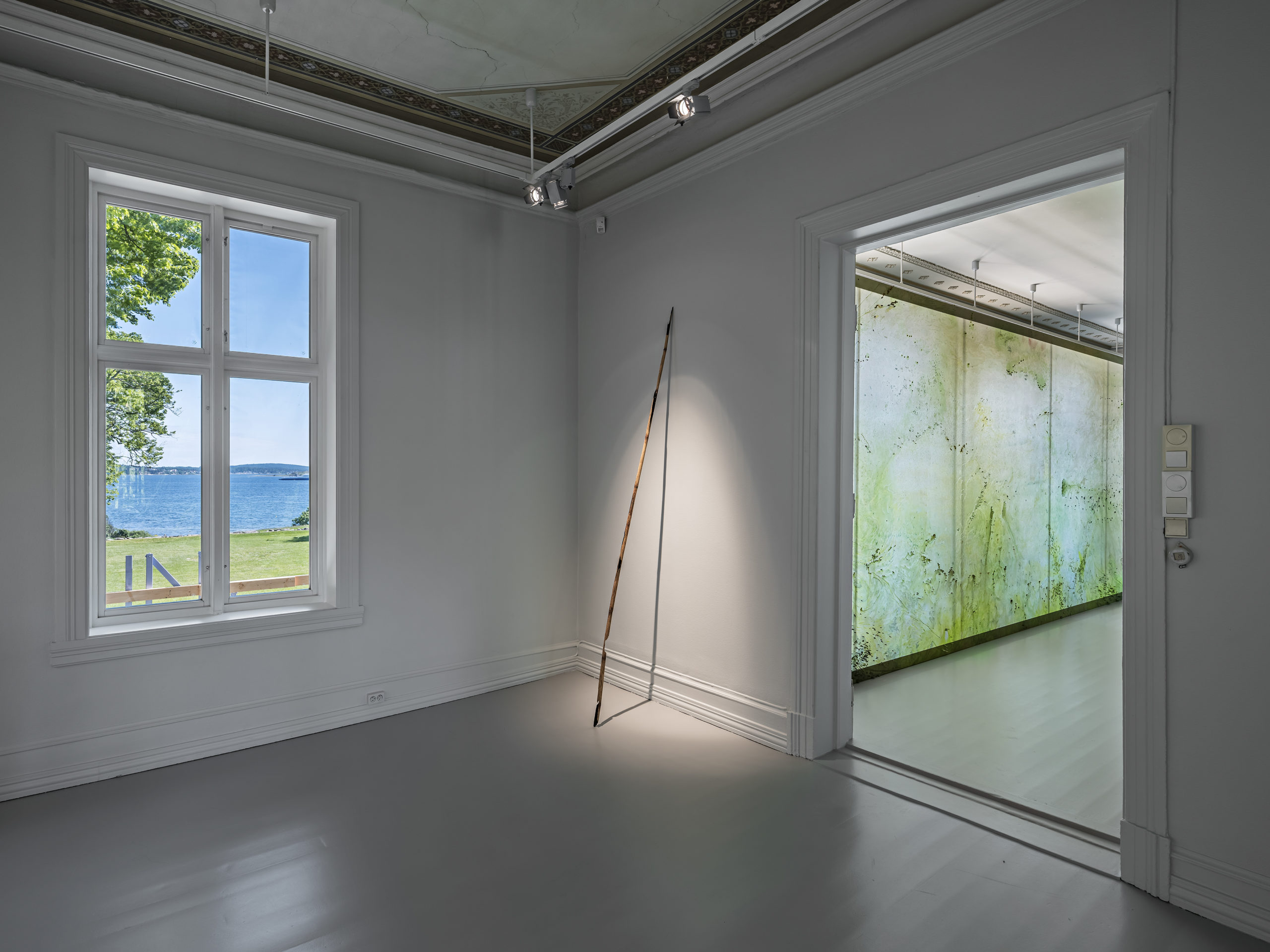
Charlotta Östlund - Hiking Pole (2018). Photo: Vegard Kleven © Galleri F 15
Charlotta Östlund
Bang (2020)
Hiking Pole (2018)
Small Galaxy (2018)
Arrow (2018)
Plant parts, metal wire, paint, glitter, beads
Charlotta Östlund’s sculptures juxtapose nature’s ceaseless cycles with a subtle lyrical sensibility. Her laborious technique of bending and modifying dried plant matter offers a gentle metaphor for the transience of all life. Organic, impermanent, and never static, her materials exist in perpetual metamorphosis, embracing gradual yet inevitable entropy.

Ida Wieth - Passage (2019). Photo: Vegard Kleven © Galleri F 15
Ida Wieth
Passage
2019
Blown, fused & slumped glass, metal oxides, copper wire, steel, birch veneer
Ida Wieth addresses the unusual characteristics of glass through a persistent and experimental exploration of its substance, content, form, force, and will. With reference to the metamorphic nature of the human body, her large-scale installation Passage explores the ability of glass to stretch and transform from liquid to solid over short intervals. Earthy and vibrant hues blend with metal oxides to create a coarse and fragmented texture.
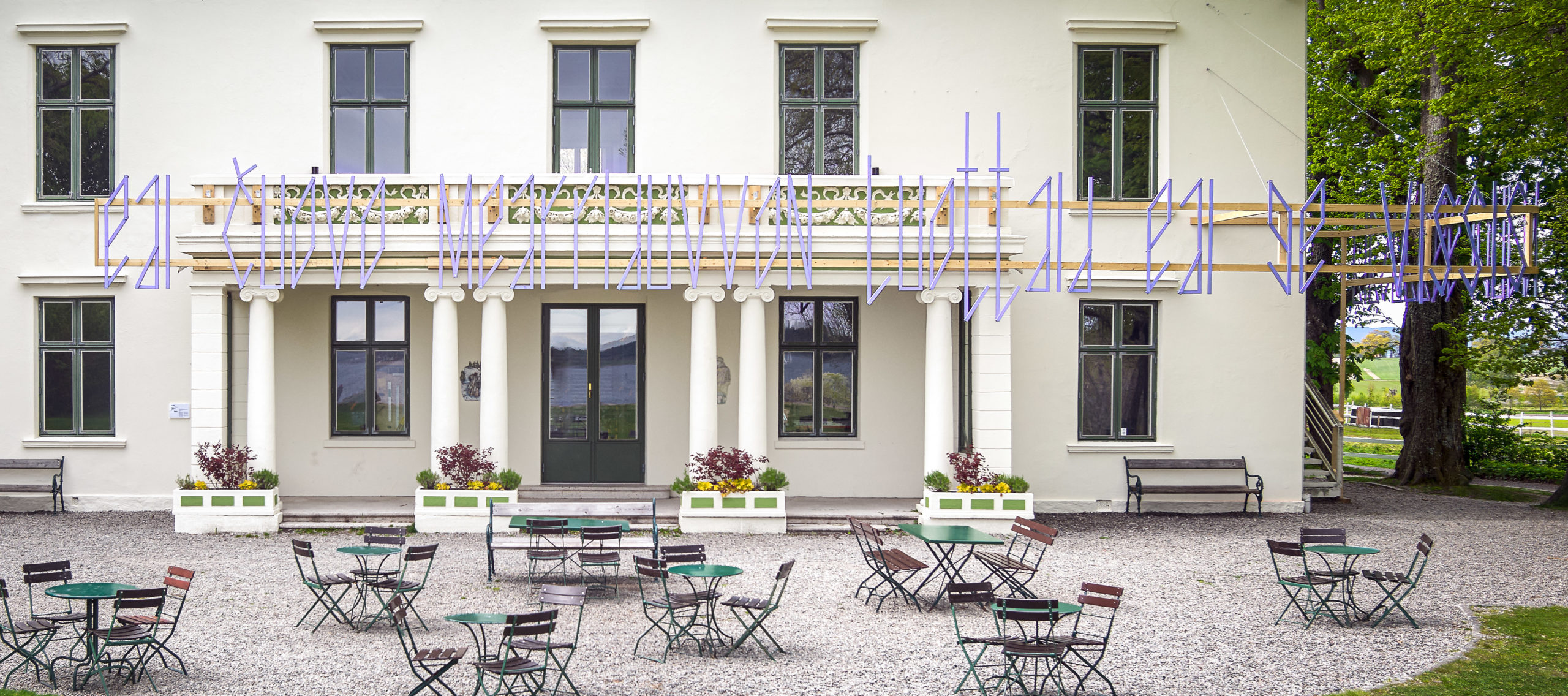
Fellesskapsprosjektet å Fortette Byen - Meahccetrošša/Matatu: Eai čuovo mearriduvvon luottaid, eai ge vissis njuolggadusaid / They don’t follow routes and they don’t conform to regulated order (2020, Jeløy). Photo: Eivind Lauritzen © Galleri F 15
Fellesskapsprosjektet å Fortette Byen
Meahccetrošša/Matatu: Eai čuovo mearriduvvon luottaid, eai ge vissis njuolggadusaid / They don’t follow routes and they don’t conform to regulated order
2011 (Kárášjohka)
2020 (Jeløy)
Recycled wood, paint
The space between individual expression and a community’s public rights is explored in several projects by Fellesskapsprosjektet å Fortette Byen (FFB), a group established in 2010 by artist and architect Joar Nango and architects Håvard Arnhoff and Eystein Talleraas. For Earth, Wind, Fire, Water, FFB has used found and reclaimed materials to make a text-based work for the gallery’s facade. Written in the Northern Sámi language it states: Eai čuovo mearriduvvon luottaid, eai ge vissis njuolggadusaid / They don’t follow routes and they don’t conform to regulated order. This reference to the Northern way of life stresses the importance of transcending laws and regulations in order to forge autonomous systems and spaces.
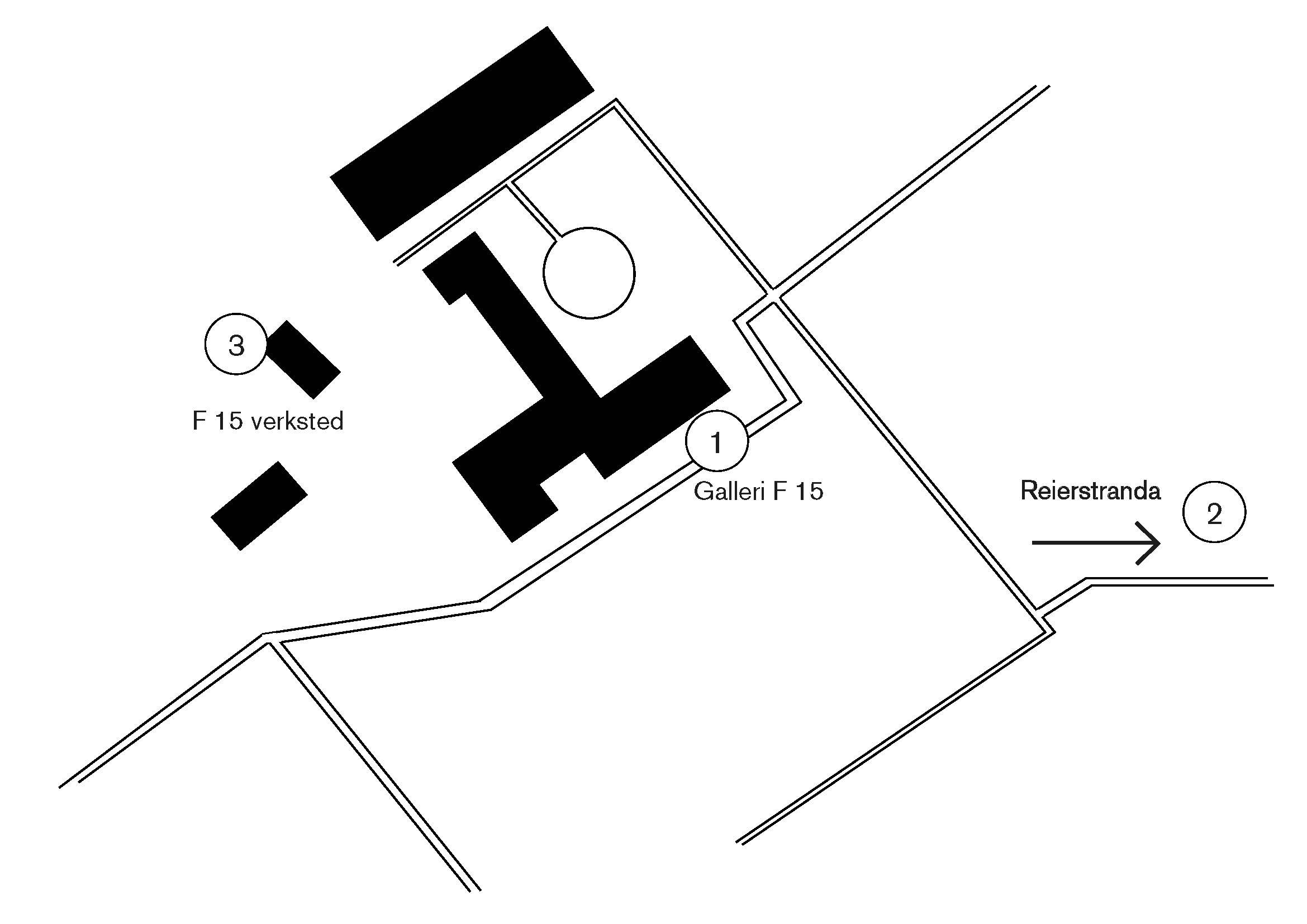
Brynjar Sigurðarson & Veronika Sedlmair
Of Stones and Faces (Animated Geology)
2020
7 carved stones in Reierstranda
Site responsive intervention
With the power to alter matter, ideas, and society, an artistic practice is transformational in many respects. In the site-responsive project of duo Brynjar Sigurðarson and Veronika Sedlmair, the artists carve into stones in the rocky bays of Jeløy, animating the material by sculpting it on site. In doing so, Sigurðarson and Sedlmair intervene in geological processes, accelerating each stone’s millennia-long transformation into an infinitesimal grain of sand. The artists’ impact may well catalyse the folklore of a distant future.
Due to covid-19 this project is delayed until September 2020.
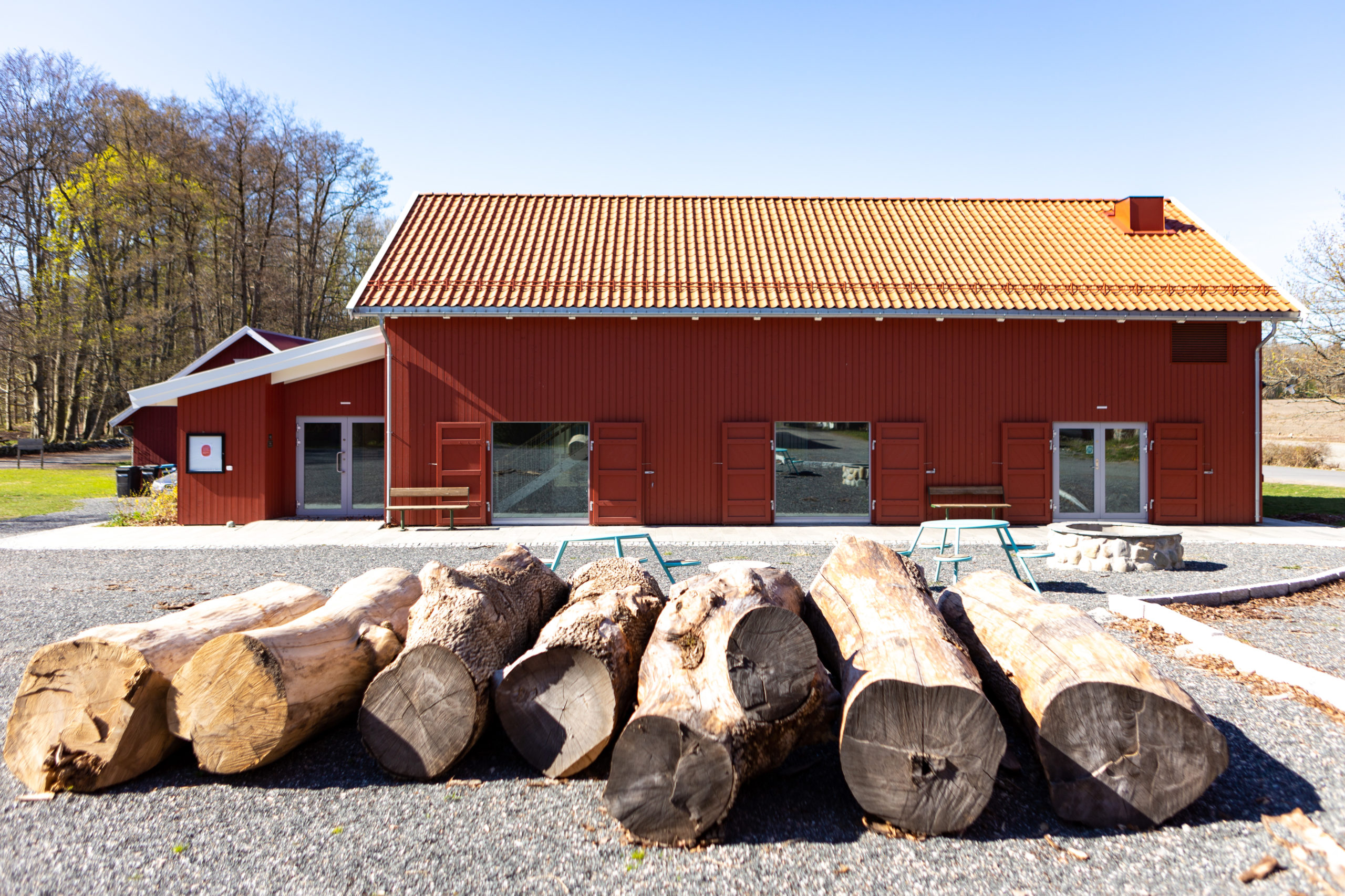
Wood prepared for Valentin Manz' workshop in September. Photo: Eivind Lauritzen © Galleri F 15
Valentin Manz
for a cup of tea with the bunny rabbits
2020
Open studio, wood workshop
With a background spanning visual art, scenography, and art psychothwerapy, Valentin Manz merges craft and conversation to prompt dialogue on pressing themes such as generational shifts in labour and identity. Towards the end of the exhibition period visitors to Galleri F 15 are invited to visit Manz in an on-site wood workshop, where they can observe and assist the artist as he carves sculptures from large tree trunks. Relocated to the surrounding landscape as they are produced through the spring and summer, the sculptures subtly transform as the weather shifts.

